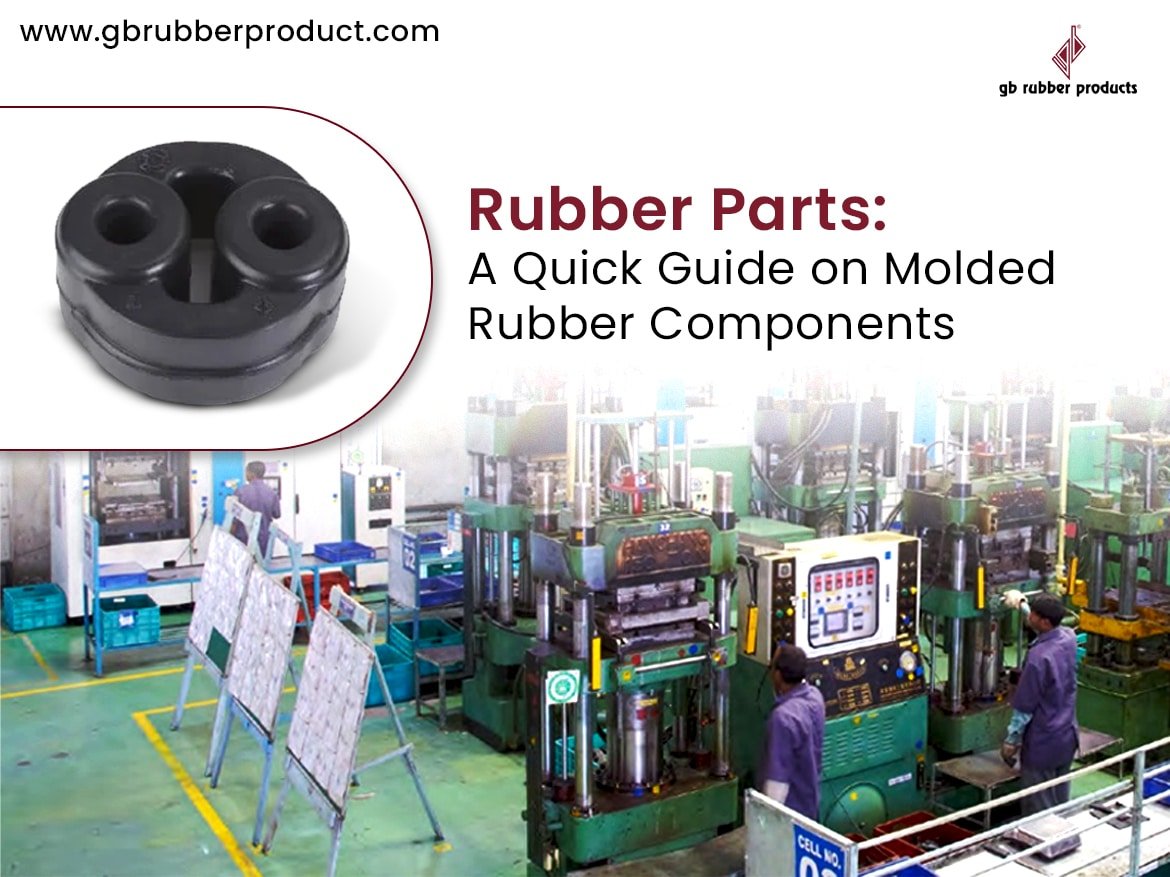Within the manufacturing sector, where innovation and precision are crucial requirements, rubber parts are a reliable component that contributes to various industries. The contribution of these rubber-molded parts can be found almost everywhere, from cars to railcars and aerospace to household appliances. In this blog, we will explore the essentials of rubber-molded products and the pivotal role of leading suppliers in guiding you through the diverse types and processes involved in manufacturing rubber products.

What are Rubber Molded Parts?
Rubber molded parts include a broad spectrum of rubber components designed to withstand extremely different weather conditions, pressures, and chemical resistance properties. From rubber seals and gaskets to o-rings and bushings, these versatile components are used in automotive engines, hydraulic systems, machinery, and beyond. Therefore, the elasticity of molded rubber parts makes them indispensable in manufacturing.
Understanding the Manufacturing Process
The manufacturing process of molded rubber products typically includes various methods to create durable and efficient rubber products.
Rubber Molding
This is one of the most prominent rubber molding techniques manufacturers follow. To explain the molding process more clearly, the manufacturers put the rubber materials into a mold cavity exposed to heat and pressure. Furthermore, it activates a chemical reaction that pushes the material to take a desired shape. The molding process comprises three key methods: injection, transfer, and compression molding.
Rubber-to-Metal Bonding
Some products require the strength and durability of metal along with rubber’s elasticity and flexibility; in such cases, rubber-to-metal bonded products provide excellent solutions. The rubber-to-metal bonding process also includes a mold that integrates rubber with metal components. However, manufacturers spray a heat-activated adhesive before pouring the metal parts into the mold.
Molded Rubber Parts: Know The Materials
Rubber materials used in rubber-molded parts can be categorized as two crucial materials – natural rubber and synthetic rubber.
Natural Rubber: The materials obtained from natural rubber are free from any artificial components, derived from the sap of rubber trees, and known for offering excellent elasticity and power. Additionally, natural rubber is suitable for goods that require high tensile strength and tear resistance.
Synthetic Rubber: Synthetic rubber is an elastomer artificially created to duplicate the features of natural rubber. Ideally, the monomers (byproducts of petroleum-gasoline) are converted into polymers. These materials are often used for various properties such as temperature stability, chemical resistance, and cost-effectiveness.
Various synthetic rubbers recommended by rubber products supplier are:
- Neoprene
- Styrene-Butadiene Rubber (SBR)
- Silicone
- Polybutadiene
- Ethylene Propylene Diene Monomer (EPDM)
- HNBR (Hydrogenated Nitrile Butadiene Rubber)
- Fluorocarbon
Types of Rubber Molded Parts
The products produced from molded rubber are comprehensive, and each is designed to meet the demands of specific applications in different industries.
1.Seals: These sealing components are manufactured to prevent leakage and the mixture of external elements. They are primarily found in hydraulic systems, automotive engines, and heavy industrial machinery.
2.Gaskets are prominent rubber parts that ensure a tight seal between two mating surfaces. They are essential in engines, pumps, and pipelines, providing efficient operation and preventing leaks.
3.O-rings: These are the O-shaped elastomers. Eventually, they are mainly used in gas or fluid sealing due to their simplicity and effectiveness.
4.Bushings are cylindrical and act as buffers or insulators, generally absorbing shocks and vibrations in machinery and automotive suspensions.
5.Grommets: Often overlooked but equally important, grommets are the rubber products manufactured by rubber seal manufacturers in india which have applications in diverse industries to protect holes or edges of materials.
Although molded rubber components are excellent at fulfilling exact specifications and providing better performance, standard rubber parts are more widely available and more affordable for general-purpose uses. Furthermore, the choice between the ideal rubber parts depends on the requirements of specific applications, thereby necessitating meticulous engineering behind the development of such rubber products.
Read More –Uses for Rubber: Custom Moulding for Superior Performance and Benefits
To End With
To sum up, rubber-molded parts are crucial components that facilitate the progress and success of many applications across various industries. Known for their versatility, strength, and durability, most sectors often choose molded rubber products for better performance.
Above all, with our state-of-the-art manufacturing facilities and rigorous quality control measures, our engineers at GB Rubber Products ensure that each rubber component meets the client’s expectations. From quality rubber seals to bushings, we strive to be your trusted partner for all your rubber needs.
Partner with us for quality and premium rubber sealing solutions today.



